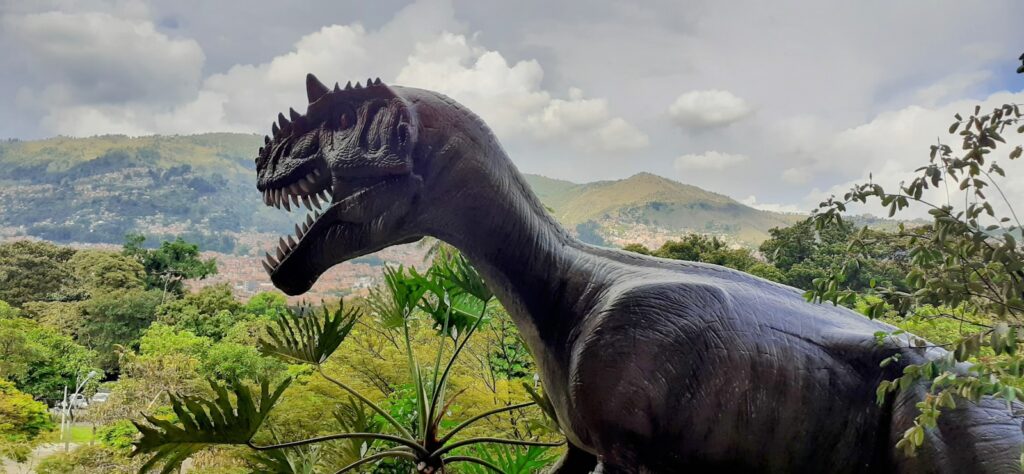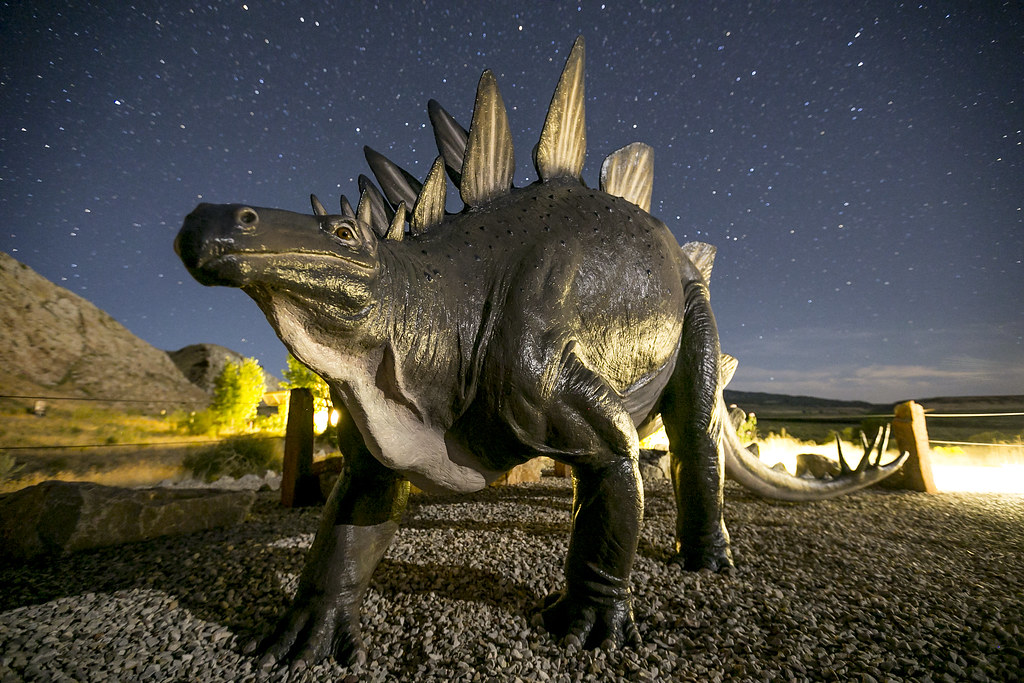Picture this: It’s 1993, and kids across America are clutching plastic velociraptors, roaring at their siblings, and begging their parents to take them to the natural history museum. Suddenly, everyone knew the difference between a T-Rex and an Allosaurus, and paleontology became the coolest job on Earth. This wasn’t just a fleeting fad – it was a cultural earthquake that shook the world and left an indelible mark on how we view prehistoric life.
The Jurassic Park Revolution

When Steven Spielberg’s “Jurassic Park” hit theaters in June 1993, it didn’t just break box office records – it shattered everything we thought we knew about dinosaurs. The film’s groundbreaking CGI brought creatures to life in ways that stop-motion animation never could, making audiences genuinely believe they were watching real dinosaurs breathe, hunt, and terrorize.
Universal Studios reported that dinosaur-themed merchandise sales skyrocketed by over 400% in the months following the film’s release. Toy stores couldn’t keep dinosaur figures on shelves, and museum gift shops saw unprecedented demand for everything from fossil replicas to dinosaur encyclopedias. The movie’s success proved that audiences were hungry for prehistoric content, and Hollywood took notice.
Scientific Breakthroughs That Changed Everything

The 1980s and 1990s weren’t just about Hollywood magic – they were decades of revolutionary paleontological discoveries. Scientists unearthed game-changing fossils that completely rewrote our understanding of dinosaur behavior, appearance, and evolution. The discovery of feathered dinosaurs in China and evidence of warm-blooded metabolism challenged the old image of sluggish, cold-blooded reptiles.
Jack Horner’s research on dinosaur nesting sites revealed that many species were devoted parents who cared for their young. These findings humanized dinosaurs in ways that captivated public imagination. When people learned that some dinosaurs lived in herds, communicated through complex calls, and showed emotional bonds, these ancient creatures suddenly felt less alien and more relatable.
The Rise of Dino-Documentaries

Television networks recognized the goldmine of dinosaur fascination and responded with an avalanche of documentaries. Shows like “Dinosaurs!” narrated by Walter Cronkite and later “Walking with Dinosaurs” brought cutting-edge paleontology directly into living rooms worldwide. These programs didn’t just present dry facts – they told stories that made viewers feel like time travelers.
The documentary format allowed for deeper exploration than movies could provide. Viewers learned about dinosaur ecosystems, extinction theories, and the painstaking work of paleontologists. Networks like Discovery Channel and National Geographic built entire programming blocks around prehistoric life, creating a feedback loop where public interest drove more content, which in turn fueled even greater fascination.
Museum Makeovers and Blockbuster Exhibitions

Natural history museums across the globe scrambled to renovate their dinosaur halls to meet exploding public demand. The American Museum of Natural History in New York completely redesigned its fossil halls, creating immersive environments that transported visitors back millions of years. Museums reported visitor increases of 200-300% during major dinosaur exhibitions.
Interactive displays replaced static glass cases, allowing visitors to touch real fossils and operate paleontological tools. The Field Museum in Chicago acquired “Sue,” the most complete T-Rex skeleton ever found, drawing record-breaking crowds. These institutions transformed from dusty repositories into dynamic entertainment venues that competed with theme parks for family attention.
The Toy Industry’s Prehistoric Goldmine
Toy manufacturers struck gold with dinosaur-themed products that dominated holiday wish lists throughout the 1990s. Companies like Kenner produced intricate action figures with realistic details and moveable parts, while Playskool created educational toys that taught children about different species and time periods. The global dinosaur toy market expanded from millions to billions of dollars virtually overnight.
What made these toys special wasn’t just their popularity – it was their educational value. Parents felt good about buying dinosaur toys because they combined entertainment with learning. Children developed genuine knowledge about paleontology, geology, and evolution while playing, creating a generation more scientifically literate than any before.
Pop Culture’s Prehistoric Invasion

Dinosaurs infiltrated every corner of popular culture during this era. Saturday morning cartoons featured dinosaur characters, from the friendly “Barney” to the adventure-packed “Dino-Riders.” Comic books, video games, and even breakfast cereals adopted dinosaur themes to capitalize on the trend.
The cultural impact extended beyond children’s entertainment. Fashion designers incorporated dinosaur motifs into clothing lines, and restaurants like “T-Rex Cafe” built entire dining experiences around prehistoric themes. This wasn’t just merchandising – it was a fundamental shift in how society viewed and celebrated scientific discovery.
The Publishing Boom

Bookstores witnessed an unprecedented surge in dinosaur-related publications. Children’s books about dinosaurs flew off shelves, while adult non-fiction titles about paleontology found mainstream audiences for the first time. Publishers recognized that dinosaur content appealed to readers of all ages, from picture books to academic texts.
Authors like Robert Bakker became household names, translating complex scientific concepts into accessible narratives. Their books didn’t just inform – they inspired readers to see dinosaurs as fascinating animals rather than Hollywood monsters. This literary boom helped sustain public interest long after the initial movie hype faded.
Educational Revolution in Schools

Elementary schools integrated dinosaur studies into their curricula with enthusiasm that matched their students’ excitement. Teachers discovered that dinosaur-themed lessons could make subjects like math, science, and reading more engaging. Educational supply companies developed comprehensive dinosaur learning kits that made paleontology accessible to young minds.
Science museums began offering school programs that combined entertainment with rigorous education. Students could participate in mock excavations, examine real fossils, and learn about scientific methodology through hands-on activities. These programs created lasting impressions that influenced career choices and lifelong learning habits.
The Technology Factor
Computer graphics technology reached a tipping point in the early 1990s, making realistic dinosaur animation possible for the first time. Industrial Light & Magic’s work on “Jurassic Park” demonstrated that audiences would accept CGI creatures as believable, opening floodgates for dinosaur content across all media. This technological breakthrough was crucial – earlier attempts at dinosaur movies had been limited by unconvincing special effects.
The timing was perfect. Home video technology allowed families to watch dinosaur content repeatedly, while emerging computer games let players interact with prehistoric worlds. CD-ROM educational software brought museum-quality dinosaur information into homes, creating unprecedented access to paleontological knowledge.
The Celebrity Paleontologist Phenomenon

Uploaded by FunkMonk, CC BY-SA 2.0, https://commons.wikimedia.org/w/index.php?curid=22179538)
Paleontologists like Jack Horner, Bob Bakker, and Phil Currie became media celebrities, appearing on talk shows and lending their expertise to documentaries. These scientists possessed the rare ability to communicate complex ideas in ways that excited general audiences. Their passionate advocacy for dinosaur research helped legitimize paleontology as a serious scientific discipline worthy of public support.
Television networks recognized that viewers wanted to learn from real experts, not just watch fictional dinosaurs. This celebrity status brought increased funding to paleontological research and inspired countless young people to pursue careers in earth sciences. The scientists became the rock stars of the academic world.
Global Cultural Impact

The dinosaur boom wasn’t limited to America – it spread worldwide with remarkable speed. Japanese toy manufacturers created intricate dinosaur figures that rivaled anything produced in the West. European museums developed their own blockbuster dinosaur exhibitions, while countries like Argentina and Mongolia promoted their fossil discoveries as tourist attractions.
This global phenomenon demonstrated how scientific discovery could transcend cultural boundaries. Children in Tokyo played with the same dinosaur toys as kids in New York, creating a shared cultural experience that connected young people across continents. The universal appeal of dinosaurs proved that curiosity about the natural world was truly global.
The Economics of Extinction

The financial impact of the dinosaur boom was staggering. Hollywood studios invested hundreds of millions in dinosaur films, while toy companies reported dinosaur products as their best-selling items. Theme parks like Universal Studios built entire attractions around dinosaur experiences, drawing millions of visitors annually.
Museums saw their membership rolls expand dramatically, with families joining specifically to access dinosaur exhibitions. The economic ripple effects extended to tourism, with destinations like Drumheller, Alberta, and Montana’s badlands experiencing unprecedented visitor numbers. Entire communities built their economies around dinosaur tourism, creating jobs and generating tax revenue from fossil fascination.
The Educational Legacy

Perhaps the most significant long-term impact was educational. The dinosaur boom created a generation of scientifically curious individuals who maintained their interest in natural history throughout their lives. Universities reported increased enrollment in geology and paleontology programs, while science museums noted sustained high attendance at dinosaur exhibitions.
This educational renaissance extended beyond formal learning. Families began visiting museums together, watching nature documentaries, and engaging in scientific discussions at home. The dinosaur boom demonstrated that complex scientific concepts could be made accessible and exciting to general audiences, paving the way for future science communication efforts.
Lasting Impact on Modern Culture

The dinosaur boom of the 1980s and 1990s fundamentally changed how society views science and discovery. It proved that scientific content could be both educational and entertaining, inspiring a generation to pursue STEM careers. The success of dinosaur-themed entertainment showed that audiences were hungry for authentic scientific content when presented in engaging ways.
Today’s continued fascination with dinosaurs, from blockbuster movie franchises to cutting-edge museum exhibitions, traces directly back to this pivotal era. The boom established dinosaurs as permanent fixtures in popular culture while elevating paleontology to unprecedented public prominence. What started as a Hollywood movie became a cultural movement that reshaped education, entertainment, and our understanding of the natural world.
The combination of scientific breakthrough, technological advancement, and masterful storytelling created a perfect storm that captured imaginations worldwide. Those plastic dinosaurs gathering dust in attics represent more than childhood memories – they’re artifacts of a time when science became truly cool, and an entire generation discovered that learning about the past could be the most exciting adventure of all.




